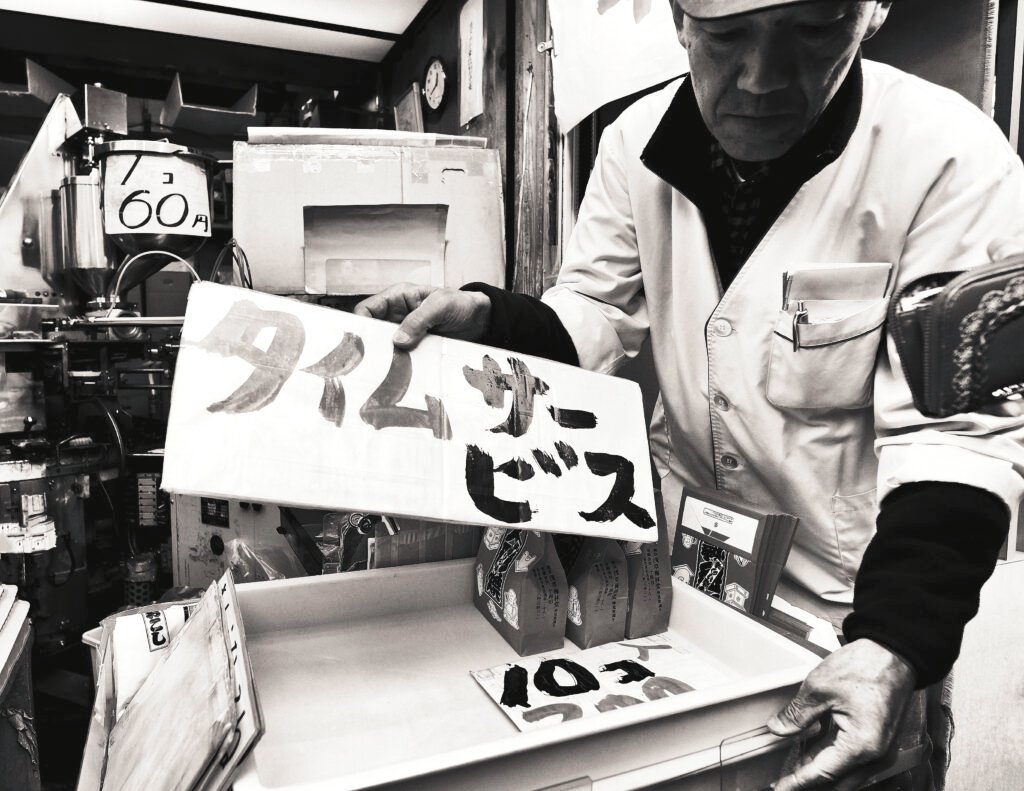
It’s 4:27 a.m. in Tokyo, and the air still smells of fish guts, diesel, and cold ambition. At Tsukiji Market, under flickering fluorescent lights and the low groan of cart wheels, a middle-aged man—Kenta-san, fifty-two—climbs onto an overturned crate to change the handwritten sign above his stall. His fingers are stained from years of tuna blood and soy ink. The cardboard creaks as he steadies it. His knees, too.
Today’s catch: from Oma. Expensive. Firm. Red like a rising sun. He draws the kanji characters, quick and sharp, the way his father taught him when signs still mattered more than Instagram. He’s not in a rush, but time moves fast here. Buyers will be coming soon—sushi chefs with eyes sharper than blades, tourists already lost and filming everything, uncles who remember when this whole market was only smoke, crates, and cash.
Kenta pulls his gloves on. Adjusts his apron. He’s been here since he was fifteen. Watched Tsukiji swell and shift, watched his old neighbors pushed into corners, watched Toyosu rise like a glass ghost to the east. They say everything is “modern” there now—sanitized, fluorescent, perfect. But Kenta stays.
Because here, beneath rusted beams and century-old concrete, the floor still knows his steps. The fishmongers still call out his name. And the sign—handwritten, bold, smudged at the edge—is still his own. He steps down. Wipes sweat from his brow. And shouts to the noodle stall across the aisle:
“Oi! Save me a bowl before the crowd comes!” And the market, for a moment, breathes just as it always has—with steam, sharp knives, morning light, and men like Kenta, who hold up cardboard signs
against the tide of change.